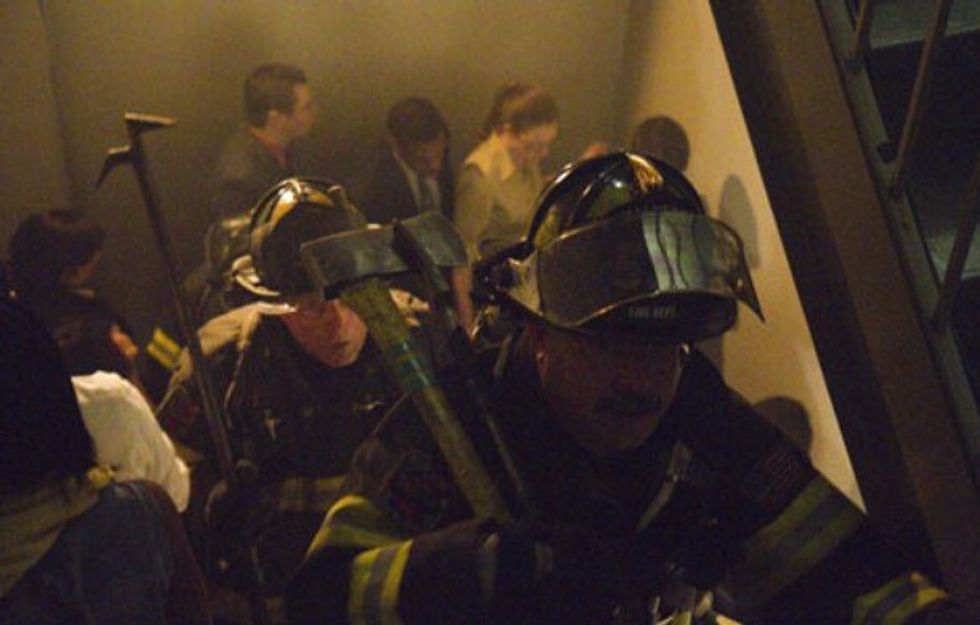Anyone can write a synopsis for what occurred on September 11, 2001, in New York City—two hijacked planes struck the North and South Towers of the World Trade Center. But only masterful reporters can write a book on the story inside those burning towers, compiling the tales of victims and survivors alike and immortalizing their individual plights in the face of a national tragedy.
Jim Dwyer and Kevin Flynn’s 102 Minutes is a chronicle of hundreds of stories at ground zero of the tragedy between the hours of 8:46 AM to 10:28 AM. The whole book, which spans mostly the mentioned time frame, is crafted from an extraordinary effort that involved hundreds of interviews, thousands of pages of oral histories, and scores of phone, e-mail, and emergency radio transcripts. Rather than focus on just several heroic figures, this book gives the spotlight to ordinary people of all backgrounds and struggles. The authors honor heroics, but they also respect and acknowledge the natural fear, confusion, and hesitation of the trapped inhabitants. It’s not an epic Iliad that celebrates heroes, but rather a somber Odyssey that celebrates survival.
The chapters are organized chronologically by time stamps. In consequence, each chapter winds up telling thirty or more different narratives simultaneously. Although the authors attempt to give weight to the names listed with background information and distinct idiosyncrasies, this method of storytelling works against the reader’s attempts to empathize with the people involved. However, the book also gains added suspense and a natural film-esque flow from a chronological ordering of events. The reader can visualize (partly thanks to the inclusion of maps for the towers) the exact locations of each character and immerse themselves in their present situation. All the while, we wonder exactly how long they’ll take to get out of the buildings—the dramatic irony is that we know their time is limited, and they don’t.
Image linked from: replica-watch.info
That irony is certainly where the book draws most of its poignancy. They’re simply too many names to keep track of, yet we are reminded constantly of where they’re located inside the towers. Some characters’ narratives end, because they’ve reached the ground level and escaped the collapse; others’ end more abruptly, because their phone conversations ceased or the survivors never saw them again. The stories of victims are mixed with those of survivors, yet there’s rarely any warning that separates the two until it’s too late. All we can do as readers is hope that the name we’re following is one that will appear in the next chapter or escape in time.
Each account is harrowing in its own way, lending to the uncertainty of a happy ending. For those on lower floors, the dangers are disorientation, loss of lighting, and hesitation. Anyone who lived on the upper floors struggles against flames, smoke, gruesome injuries, and destroyed stairs. The devastation around the areas of impact especially is described in its full horror—charred corpses, amputated legs, suffocating darkness—and characters given paragraphs of introduction start to become names on a body count.
Image linked from: ak0.pinimg.co
People, like the folks on the top floor of the North Tower, who were left with no way down by the damages on lower floors, aren’t ignored either. The authors work hard to paint the experiences they felt and saw through the interpretation of background noises in phone calls. In spite of the limitations, these victims are respectfully given the same quality of storytelling as the survivors who provided eye-witness accounts. This devotion to recreation of the victims’ experiences is a testament to the devotion of the authors in telling the whole story.
Ultimately, that respect and passion given to the people inside the towers translates into an admirably accurate and unabridged record of those 102 minutes. The book is both an immersive drama and a historical commemoration that honors the survivors and victims of this tragedy. Dwyer and Flynn convey how fragile humanity can be when faced with an unimaginable crisis. They remind us with every account that these people were only human, making choices as we might in their situation.























